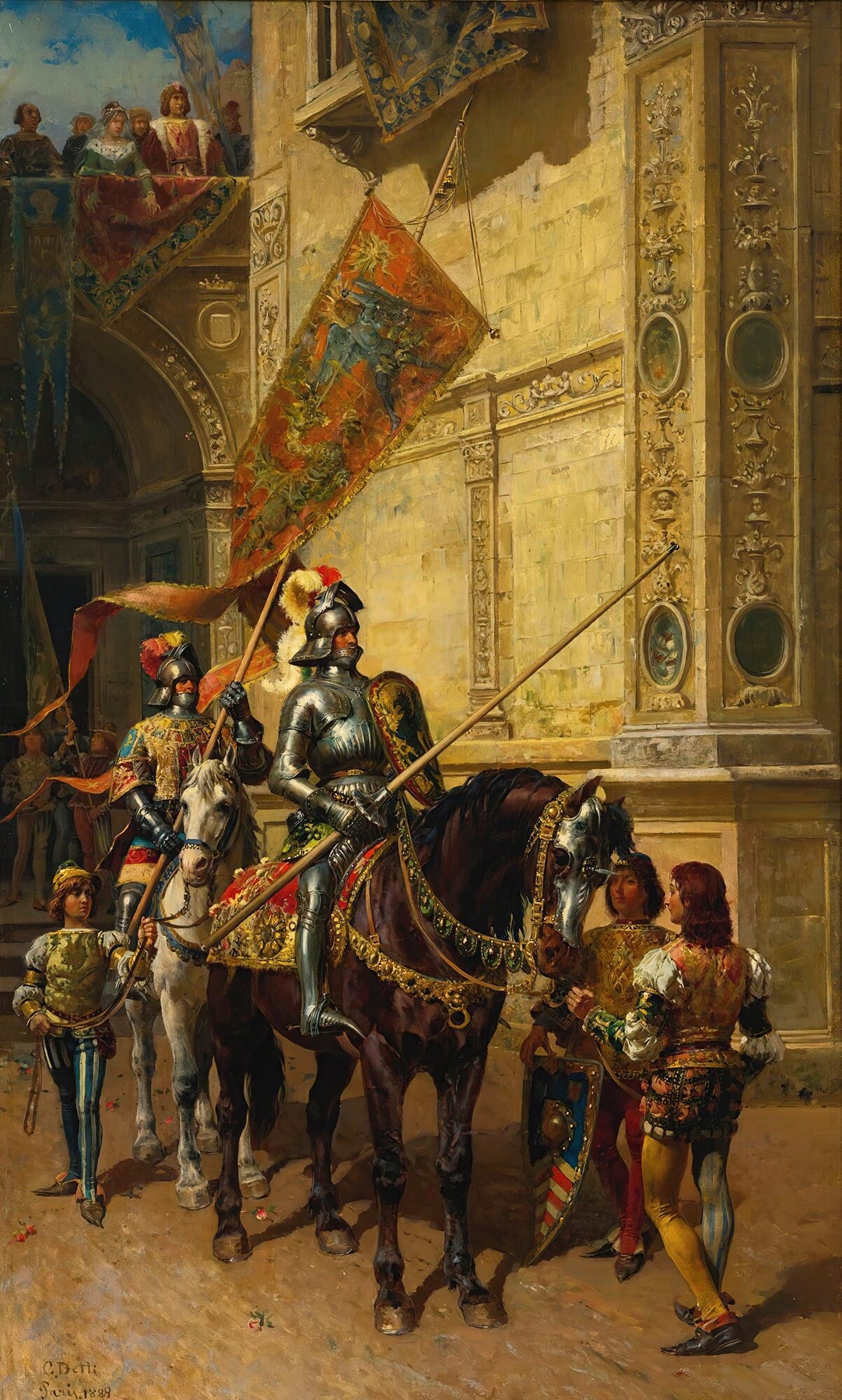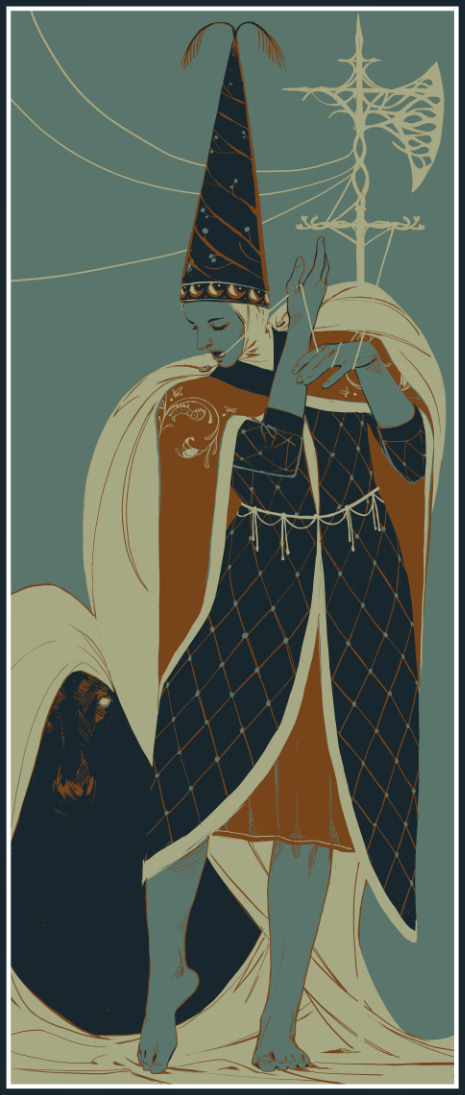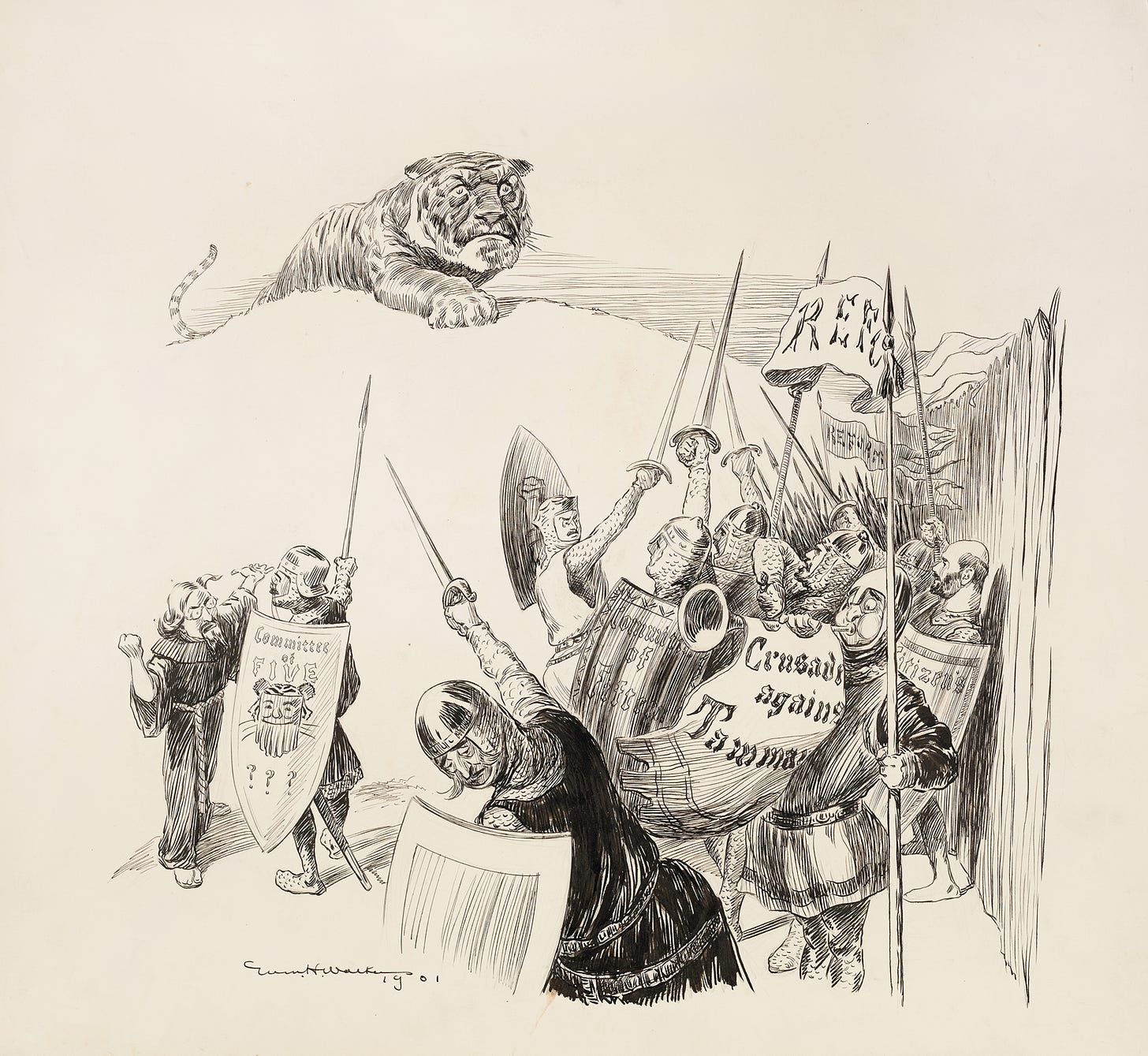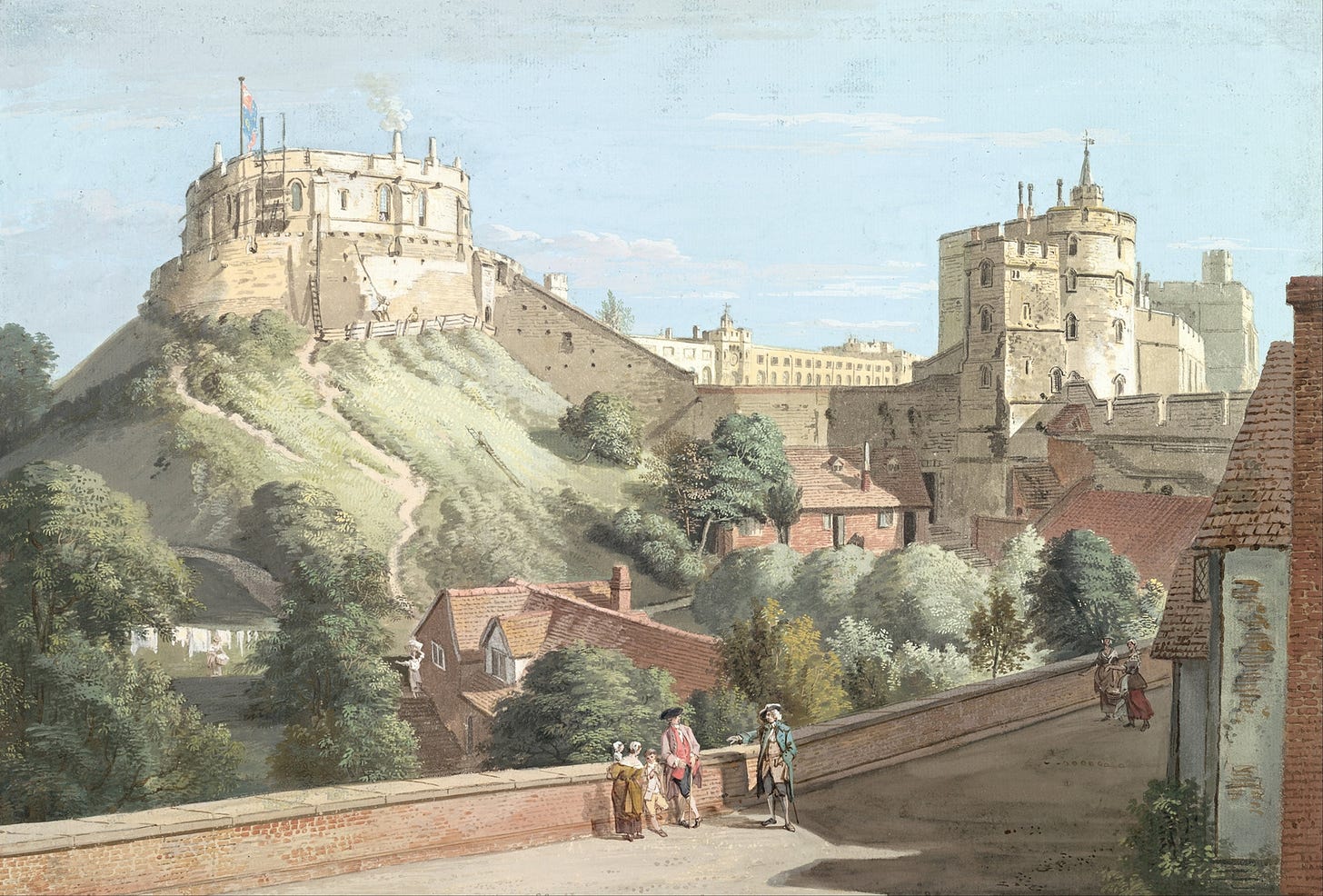Running Tourneys and Jousting in Mythic Bastionland
The Thorn Diaries #003
Previously on…
Summer S’mores in Sepulchria
Summer came to the Realm of Sepulchria, and with it the Feast of the Stars, “a night of honours, unions, and contests”. And what’s a contest between knight? Why, ‘tis a joust!
I see some folks playing Mythic Bastionland are curious about running a joust: I’ll breakdown how I did it. What I did, while certainly not the definitive way to run a joust (no such thing), worked well for me and my group and created dramatic tension that is likely to pay dividends for the rest of this Age, at least.
Prepping a Joust
First, what was the reason for this joust? If you’ve missed out on my previous post, the Knights-Errant accepted a quest from the Red Seer to show up the Chain Knight, Jago, who had broken his oath to her and used the precious item he had retrieved for her to instead curry favour with the Red Seer’s ex, the Realm’s Lord, Baron Brittle. What better place to humble an oathbreaker than at a joust?
Before the game, I rolled for a few Knights - noted down their stats, their weapon dice, anything else that might have born relevance. My personal favourite was Juniper, the Silk Knight, high of spirit (16) but otherwise unimpressive. One of the players knocked Juniper off her steed and stole her hat, which the audience was scandalised by and I thought was utterly hilarious.
The stats I rolled for Jago, the Chain Knight, were well and truly bad news for the player characters: 15 VIG, 11 CLA, 12 SPI, 5GD. Above the average in all ways, Jago - and since he was a Knight-Tenant, taking part in the Joust of Stars (patent pending) to represent Baron Brittle, I gave him a mighty steed with a d8 trample.
So, how did the joust look on a formal level? I wanted to have it dominate the latter part of a tourney. Thirty-Two Knights and squires would enter a melee => down to sixteen (duels) => down to eight (Joust), down to four (Joust). Since this was to be a shorter session at about two and a half hours, I didn’t want to engage in full-blown combat for the first two rounds of the tourney: instead, I had each of my players roll a Virtue of their choice per tourney round. Whether they succeeded or failed, they would pass those two rounds: a success meant that they did so with ease and a flourish, while a failure suggested that they scrape by the skin of their teeth, and so lose a d6’s worth of the Virtue they picked. The Joust rules were as follows: the first round of jousting only required someone to be knocked off their steed the one time; the semi-finals were best out of three, and the final joust demanded that one Knight knock out the other in a best of five contest.
The first two rounds worked well and created some hilarious scenes. The newest player, S., who rolled up a Moss Knight named Gwendolyn, chose to use her worst Virtue, Vigour, and succeeded, so we came up with a fellow Knight hailing her, being all dashing and valiant and long-winded about how he regretted to come to blows with such a stunning creature. The stunning creature beat him over the head with a cudgel, repeatedly. The audience, both real and imaginary, cheered Gwendolyn on.
The bladed duels produced our first failed save, whereby I furiously scanned through the list of Knights and came across the Tiger Knight, who really made player K.’s Ring Knight Lorelai work for it: blows and flirtatious comments were exchanged, and the promise of more, however the tourney should end.
The Joust Proper
As far as consolation prices went, it turned out that Lorelai would really need one. She was the first to be knocked out of the tournament. Because of the rings she and A.’s Salt Knight wear, their Guard is a wild 10; that makes them pretty hard to hit. Unfortunately, my rolls were absolute fire, and K.’s...weren’t. Note here, that during a Joust, both contestants roll simultaneously, and resolve their rolls, gambits, etc., at the same time. The Forge Knight against whom Lorelai jousted rolled a 10, which meant he got to Scar her. The Scar table? Pretty scary.
I rolled Rupture, which was just about the worst Scar one of the Knights might get. Now, all of my players’ Knights are severely lacking in Vigour and incredibly high in Spirit and Guard; the odds of rolling 2d6 and knocking one of them all the way to Death’s Door are high. This happened: the only thing that saved Lorelai’s life was the conceit that the Baron wished no one dead, and a Seer with miraculous healing abilities was at hand. Rereading the rules now, I realise that I messed up: the ruleset very clearly says that “If Damage reduces the target’s VIG to 0, they are Slain.” An error, but we’re still very much learning the system so I won’t be too hard on myself. I got twisted up with the following rule: “At VIG 0 you are Exhausted and cannot Attack if you have moved this turn.” I shouldn’t have, the text clearly states this isn’t for cases where a Knight takes damage but - oh well.
The brutal mauling of Lorelai took the wings out of my players’ sails, and showed them that the stakes were very much serious. Though Gwendolyn defeated the Silk Knight and stole her hat, and both her and the Salt Knight Sam got to the semi-finals, Sam handily lost to Jago. The Knight-Tenant exhibited some sociopathic behaviour every time he closed the distance: smiling at the crowd whilst mounted on his steed, he looked down on a defeated Sam and told her, through gritted teeth, to return to whatever peasant’s hovel she had crawled from. He also called her “girl” in that dismissive way universally beloved by all awful sexists.
I hate to say it, but the final joust wasn’t much better. Jago dominated: I rolled incredibly well, S. didn’t.
As a second PC Knight-Errant in a row was pummelled into the ground by Jago, we ended the session with the Knight-Tennant victorious, cheered on by the crowd, our Knights-Errant left in the dust, themselves the object of the Chained Knight’s derision. If that’s not the birth of a recurring antagonist, I don’t know what is.
Lessons Learned
What I want to highlight is how dramatic the jausts between the Knights-Errant and Jago were. Once S. got the gist of combat, we rolled, adjudicated, and described what happened, again and again and again and again. It was satisfying as all hell.
If there’s one thing I was really quite peeved about, it was that I forgot to remind the players about using Feats more often - we were so concentrated on the use of Gambits, Feats practically flew out of the hive mind. I’ve made a note of a few things over the course of this post, and I so look forward to running the game that much better. For what it’s worth...Jousting was hella fun.
Next up, it’s back on the road for the Knights-Errant as we move towards the end of summer and the Tithe. What could possibly go wrong during the most joyous time of all, the taxing of feudal subjects by the Realm’s lords? Not a mad Axe-Murderer, surely!!
Bonus: Seat of Power Flavour Text
I’m pleased with how the descriptive text turned out for Glower. Whether you’re curious or in search of inspiration, have a read!
Castle Glower, black as the space between stars, rests at the heart of the Seat of Power of the Realm of Sepulchria. The city of Glower itself is a place of severe beauty, of seemingly endless brickwork in a staggering resplendence of colour: from the most well-known orange to dark red and black; even blue, grey, and purple (signifying a richness of magnesium and other minerals in the clay composition; yeah, I did research on bricks, what of it?).
Stone statues of winged creatures inhabit the green spaces between buildings, which are reminiscent of nothing so much as monastic gardens - these large green squares trapped between stone paths, doorways leading into apartment cells or public spaces such as inns, busy markets, and apothecaries.
Everywhere news finds the Knights-Errant of an adoring public eager for the tourney that is soon to begin.
The crowds have filled Glower well beyond the point of bursting. An ornate gate welcomes them, one that has seemingly escaped from the gothic nightmares of the greatest woodworkers of the age. It is said that before this gate was built, the Seat of Power had a different name: but the glowering countenances of countless demons, devils, and worse horrors yet invited a change that has taken over the public imagination.
Bonus Fact:
I seriously considered having Baron Brittle’s first name to be “Aman” just to highlight the internal conflicts in the character. Never get an English degree, it’s not worth it. A love for puns is a cursed thing indeed.






Thanks so much for this series! I finally got a chance to play MB myself and loved it so much I promised (nay, threatened!) my players that it would be entering our rotation of games after the new year. So I'm glad to have the wisdom of one who has gone before to lean upon.